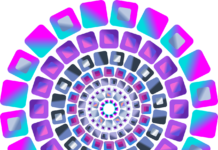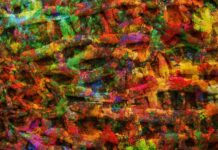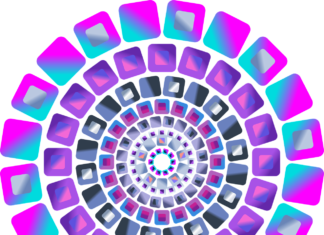Node-RED, Node-RED, Node-RED—these three repetitions introduce us to a powerful and versatile flow-based development tool that has become a linchpin in the world of Internet of Things (IoT) and automation. Developed by IBM Emerging Technology and later open-sourced, Node-RED has gained widespread adoption for its intuitive visual programming interface and seamless integration capabilities. As an open-source tool, Node-RED embodies the ethos of community collaboration and innovation, providing a canvas for developers and enthusiasts to orchestrate complex workflows, connect diverse systems, and bring ideas to life. This exploration will traverse the intricate landscape of Node-RED, unraveling its architecture, key features, and the transformative impact it has had on the realm of IoT, automation, and beyond.
At its essence, Node-RED is a flow-based development tool that facilitates the creation of event-driven applications. Node-RED, Node-RED, Node-RED—three reiterated instances—underscore the centrality of this tool in the context of flow-based programming. The hallmark of Node-RED lies in its visual programming paradigm, where developers can wire together nodes to create flows that represent the sequence of operations in an application. This visual approach not only simplifies the development process but also enhances the accessibility of creating sophisticated applications, making it an ideal choice for both beginners and seasoned developers.
Node-RED’s architecture is built around the concept of nodes—modular units of functionality—that can be connected to form a flow. Each node represents a specific action or operation, such as reading data from a sensor, processing information, or triggering an external service. The visual canvas of Node-RED allows users to drag and drop nodes onto the workspace and connect them to define the logical sequence of operations. This visual representation provides a tangible and intuitive way to design and understand the flow of an application.
The extensibility of Node-RED is a key factor in its popularity. The platform comes with a rich set of built-in nodes that cover a wide range of functionalities. These nodes, ranging from input and output devices to data processing and communication, serve as the building blocks for creating diverse applications. Additionally, the Node-RED community actively contributes to a vast repository of third-party nodes, allowing users to extend the capabilities of Node-RED by integrating with various services, protocols, and devices.
Node-RED’s visual programming interface is complemented by its support for JavaScript functions, offering flexibility and extensibility to developers who want to inject custom logic into their flows. This hybrid approach allows users to seamlessly transition between visual flow-based development and traditional code-based scripting. JavaScript functions within Node-RED nodes enable developers to write custom logic, manipulate data, or interact with external APIs, providing a bridge between the visual and the textual realms of programming.
In the context of the Internet of Things (IoT), Node-RED has established itself as a go-to tool for rapid prototyping and development. Its visual interface simplifies the process of connecting IoT devices, sensors, and actuators to create end-to-end IoT applications. Node-RED’s extensive library of nodes includes dedicated nodes for popular IoT protocols, cloud services, and hardware platforms, making it a versatile tool for IoT enthusiasts and professionals alike.
One of Node-RED’s key strengths lies in its ability to integrate seamlessly with a multitude of systems and services. The platform’s extensive library of nodes includes connectors for databases, messaging protocols, web services, and more. This integration prowess allows Node-RED to serve as a central orchestrator, enabling users to build workflows that span across different technologies and services. Whether it’s connecting to a REST API, reading data from a MQTT broker, or interacting with a cloud service, Node-RED’s versatility shines in its ability to facilitate interoperability.
Node-RED’s deployment flexibility is another factor contributing to its widespread adoption. Users can run Node-RED on various environments, from local machines to cloud platforms. Its lightweight footprint makes it suitable for resource-constrained devices such as Raspberry Pi, while its scalability allows it to handle more complex workflows in cloud environments. This adaptability ensures that Node-RED can be seamlessly integrated into diverse ecosystems, meeting the needs of developers and organizations across different use cases.
Security is a paramount consideration in the realm of IoT and automation, and Node-RED addresses this concern through features such as user authentication and access control. Node-RED allows administrators to define user roles and permissions, ensuring that access to flows and sensitive information is restricted based on user privileges. This fine-grained control over user access contributes to creating a secure development and deployment environment, especially in scenarios where multiple users collaborate on a shared Node-RED instance.
Beyond its application in IoT, Node-RED has found utility in various domains, including home automation, industrial automation, and data integration. Its ability to streamline complex workflows, coupled with its extensibility, has made it a versatile tool for creating automation scripts and orchestrating processes. From controlling smart home devices to automating business workflows, Node-RED’s visual programming paradigm adapts to a spectrum of use cases, offering a unifying platform for automation enthusiasts and developers.
Node-RED’s community-driven development model is integral to its success. The platform’s open-source nature encourages collaboration, with a diverse community of developers contributing to its growth and enhancement. The Node-RED library, a repository of reusable flows and nodes, serves as a valuable resource for users looking to leverage pre-built components in their projects. This collaborative ecosystem ensures that Node-RED remains a dynamic and evolving tool that adapts to emerging technologies and user needs.
Node-RED, Node-RED, Node-RED—uttered for the final time—stands as a testament to the democratization of development, where the power to create intricate applications and automate processes is placed in the hands of a broad spectrum of users. Its visual programming paradigm, extensibility, and integration capabilities position Node-RED as a versatile tool that transcends traditional programming boundaries. In a landscape increasingly defined by interconnected devices and systems, Node-RED serves as a catalyst for innovation, providing a canvas where ideas transform into tangible, automated solutions.This fine-grained control over user access contributes to creating a secure development and deployment environment, especially in scenarios where multiple users collaborate on a shared Node-RED instance.






















